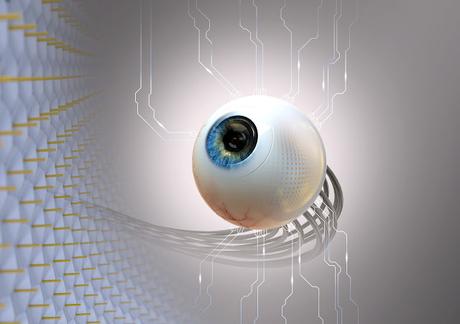
An artificial retina is a gadget made to perform the same tasks as a human retina, which is in charge of detecting light and relaying visual data to the brain. The technology is designed to help patients who have lost their eyesight as a result of degenerative eye conditions including macular degeneration and retinitis pigmentosa see again.
Although the idea of an artificial retina has been around for a while, it has only recently become technologically feasible to use one in a clinical setting. Typically, the system includes of a collection of microelectrodes implanted in the retina and a tiny camera worn on a pair of spectacles. The electrodes receive visual data wirelessly from the camera and activate the remaining retinal cells to produce a picture.
The fact that the human retina is a complicated organ with several layers of cells, each of which plays a distinct role in the visual process, is one of the difficulties in creating an artificial retina. This complex structure and function must therefore be mimicked in the artificial retina, which necessitates a high level of precision and accuracy.
The retina is a fragile, sensitive organ that is often harmed during implantation, which presents another difficulty. To prevent harm to the surrounding tissue and to make sure the electrodes are in the right location to activate the retinal cells, care must be taken while positioning them.
Despite these difficulties, scientists have made great strides in creating artificial retinas that can help patients with degenerative eye conditions regain some degree of vision. The use of optogenetics, which entails genetically altering the remaining retinal cells to increase their sensitivity to light, is one of the most promising methods. A visual picture may then be produced by the transformed cells when they are activated with light.
Other methods involve implanting wireless devices in the eye to convey visual information to the brain or using microelectrodes to directly activate the surviving retinal cells.
Clinical trials of artificial retinas have shown promising results, with many patients reporting significant improvements in their ability to perceive light and distinguish shapes and patterns. However, the technology is still in its early stages, and there is much more work to be done before it can be widely used as a treatment for degenerative eye diseases.
Artificial retina technology represents a significant breakthrough in the field of ophthalmology, offering hope to those suffering from degenerative eye diseases. While the technology is still in its infancy, researchers are making significant progress in developing devices that can restore some level of vision to patients. With continued research and development, it is hoped that artificial retinas will become a safe and effective treatment option for millions of people around the world.
